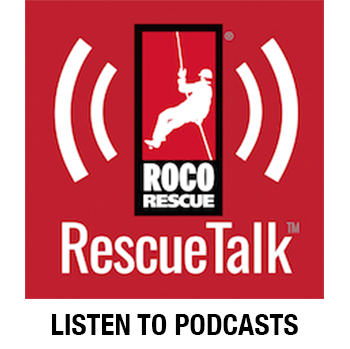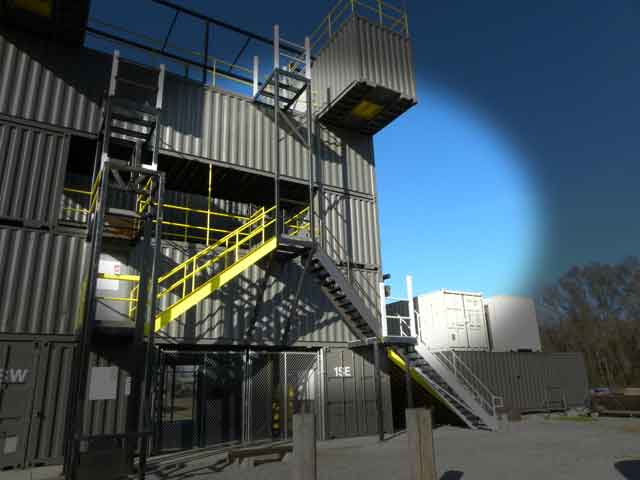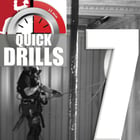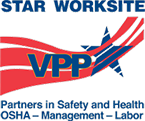 By Pat Furr, Roco Chief Instructor/VPP Coordinator
By Pat Furr, Roco Chief Instructor/VPP Coordinator
It is still happening out there, folks. Fatalities are still occurring during permit required confined space entries. Unfortunately, workers are dying because the permit space (or the entrant) was not properly prepared prior to entry. And, tragically, many of these fatalities are the would-be rescuers, who are trying to aid their co-workers! Most often, these would-be rescuers are authorized attendants or passersby that reacted improperly and took heroic, but inappropriate action. Or they may have been professional rescuers, who were not trained or equipped for this type of rescue.
In nearly every case, these fatalities are completely preventable - simply by properly preparing the permit space prior to entry by isolating or if needed, controlling all hazards. However, should an emergency arise, the rescue service must be prepared to respond to these types of emergencies. This includes proper training and equipment to ensure a successful rescue and that everyone involved goes home safe and sound.
Considering Rescue Service Options
In a previous article, we outlined the three primary ways that an employer can ensure there is a proper confined space rescue service in place as part of their written permit required confined space program. These options include:
(1) an in-house rescue team made up of host employees;
(2) a third party contracted rescue service, or
(3) relying on 911 emergency responders.
All three options have their benefits and their shortcomings. However, it is critically important that the employer focus on the entrant’s safety more than any other consideration, be it monetary, personnel, equipment, or any other resource when deciding what type of rescue service to employ.
 I get around…(no, not the Beach Boys’ song). I travel extensively visiting a variety of private and governmental sector work sites, and I also do the trade show/lecture circuit. In my travels, I hear all sorts of variations to the “confined space rescue service” theme. Many employers use in-house rescue teams and accept the funding and time commitments required to keep this capability proficient in the needed skills. Some employers rely on a third party professional rescue service to meet this requirement. Sometimes these third party agreements are for the short term such as during turnarounds, or even for sustaining operations as imbedded contractors. Still other employers rely on 911 public safety responders for their confined space rescue needs.
I get around…(no, not the Beach Boys’ song). I travel extensively visiting a variety of private and governmental sector work sites, and I also do the trade show/lecture circuit. In my travels, I hear all sorts of variations to the “confined space rescue service” theme. Many employers use in-house rescue teams and accept the funding and time commitments required to keep this capability proficient in the needed skills. Some employers rely on a third party professional rescue service to meet this requirement. Sometimes these third party agreements are for the short term such as during turnarounds, or even for sustaining operations as imbedded contractors. Still other employers rely on 911 public safety responders for their confined space rescue needs.
All three options can and do work, but the one option that I hear having only a cursory vetting process in many cases is the 911 option. At times, I have asked an employer to describe the extent of the agreement between their facility and the 911 responders. That’s when I typically hear an answer such as, “Well, all our employees know the phone number to dial.” That’s when I offer to buy coffee so we can have a little chat. This article will focus on using 911 as your confined space program rescue service.
Before I go any further, I want to say that in my view, our 911 emergency responders are true heroes. And many times, I feel they are under-appreciated. Until a major national disaster hits, many of us are guilty of overlooking the risks that these men and women take on a regular basis. I also think it’s important for employers to understand the extensive set of skills, and wide variety of skills, that emergency responders are required to master in order to perform their primary job responsibilities.
Extensive Skill Requirements for Municipal Responders
For example, firefighters are required to maintain a wide variety of special skills, such as pump operations, ventilation, PPE, emergency vehicle driving, along with medical skills such as advanced airway management, pharmacology, advanced cardiac life support and…are you getting the picture? The skills and knowledge required to perform technical rope rescue is a specialty not typically included in a firefighter’s job description unless they are assigned to a heavy technical rescue (HTR) squad.

NFPA 1006 (2013 edition, with next one coming in 2017) lists all the specialty areas that a rescue service may be called on to master. The first set of requirements is established by the department’s authority having jurisdiction (AHJ) and may include such things as a minimum level of physical fitness, HAZMAT training, emergency medical care training, and several other requirements. Then, there is what used to be referred to as “core skills” now known as Job Performance Requirements. These requirements are extensive before even addressing any of the 19 different technical rescue specialty areas such as: swift water rescue, trench rescue, machinery rescue, structural collapse rescue, wilderness rescue, and the list goes on. Also included in this list is confined space rescue.
In Albuquerque, New Mexico, where I live, we are fortunate to have a dedicated HTR squad within our fire department that is trained, equipped, and staffed 24/7. This team is called upon to respond to flash-flood rescues in our many arroyos, mountain rescue in the peaks east of the city, vehicle entrapments on two interstate highways as well as our surface streets, and may also be called to an employer’s work-site to perform a variety of rescues there. This could be anything from trench rescue to – you guessed it – confined space rescue.
CS Emergencies Require Special Skills and Equipment
It is fairly rare that municipal responders are provided the resources (including specialized training and equipment) to safely and effectively respond to confined space rescue emergencies. Rarer still, for these responders to have been afforded the opportunity to practice in the types of confined space rescues that may be required in their local industrial corridors. Any rescue service would need to be trained and equipped in advance to handle the many hazards and obstacles of permit required confined spaces.

It is the employer’s responsibility, both morally and legally, to engage with the 911 service that is being considered as their confined space rescue service.
Appendix F of 1910.146 is a very valuable means to ensure that both the rescuers and the employer know what the requirements are and that proper agreements are in place prior to confined space entry operations.
Roco has provided a sample for you to download.
Any shortfalls must be addressed. This may include lack of training, equipment, staffing, or many other requirements necessary to ensure a response appropriate for the types and hazards of the spaces onsite.
OSHA states in section (d)(4) of 1910.146 that “the Employer shall provide rescue and emergency equipment needed to comply with paragraph (d)(9) of this section, except to the extent that the equipment is provided by rescue services…” This is where an employer and a public safety agency may enter a cooperative arrangement beyond what is already expected of the 911 responder's normal duties.
Funding through grants and other resources has become very lean in the last several years. As public safety budgets are trimmed down, both career and volunteer fire departments must make budgetary decisions that in many cases result in sacrificing emergency service capabilities beyond firefighting and emergency medical services. This would mean that many of the technical rescue capabilities outlined in NFPA 1006 are not within the means of many fire departments. The impact on an employer may be that they lose a previously established ability to rely on a 911 agency for their confined space rescue needs, or they may not be able to rely on that rescue service option during the development of their permit required confined space program.
However, we also understand that it is becoming more and more common for employers to provide rescue equipment and/or funding for rescue training specific to the needs of the employer’s confined space program. Various state and local requirements may differ, but generally this can be accomplished by having the employer set up a grant with monies being donated for specific training or equipment purchases. Depending on the local ordinances, equipment can be directly transferred from the employer to the 911 agency through a simple agreement that outlines its intended purpose and ownership. There may be tax advantages to the employer while benefiting the community as well. Bottom line...there are critical steps to take before relying solely on a local 911 agency.
Evaluating Rescue Response Capabilities
Appendix F of 1910.146 clearly explains the need for employers to evaluate a prospective rescue service before depending upon their services. It states,
“Merely posting the service's number or planning to rely on the 911 emergency phone number to obtain these services at the time of a permit space emergency would not comply with paragraph (k)(1) of the standard.”
Other critical factors include response time and availability. Response time is generally extended when relying on an offsite rescue service such as 911. According to OSHA, the response time must be appropriate for the types of known or potential hazards affecting the confined spaces at the employer’s facility. Relevant factors include:
(1) Location of the rescue team or service relative to the employer's workplace
(2) Quality of roads and highways to be traveled
(3) Potential bottlenecks or traffic congestion that might be encountered in transit
(4) Reliability of the rescuer's vehicles, and the training and skill of its drivers
And, what about the availability of the rescue service? Is it unavailable at certain times of the day or in certain situations? What is the likelihood that key personnel of the rescue service might be unavailable at times? If the rescue service becomes unavailable while an entry is underway, does it have the capability of notifying the employer so that the entry operation can be aborted immediately?
In fact, these considerations also apply to any of the three means of providing a confined space rescue service, be it an in-house service, a contracted service, or a 911 emergency response. However, response times and availability are typically crucial limitations in relying on 911 for confined space rescue.
Careful Planning Required!
If you have identified 911 as the rescue service written into your confined space program, it is crucial that you take all the necessary steps to vet the agency as being a good fit to protect your employees.

In addition to all requirements of Appendix F, it is of utmost importance to pay particular attention to the service’s ability to respond in a time appropriate for your needs, and to ensure that reliable two way communications are in place. The 911 dispatch will be notified when entry operations are to commence; and, just as importantly, the 911 dispatch will notify the employer when the service is not able to respond to an emergency so entry operations can be immediately aborted.
With careful planning, thorough communications, and proper training and equipment, relying on 911 response for confined space rescue can work. Unfortunately, in some instances, the outcome is tragic with loss of life not only to the entrants, but also to the unprepared 911 responders who had little clue as to what they were about to encounter. As an employer, it is your responsibility to make sure the rescue service is adequately prepared!
Additional OSHA References:
1910.146(d)(9) Develop and implement procedures for summoning rescue and emergency services, for rescuing entrants from permit spaces, for providing necessary emergency services to rescued employees, and for preventing unauthorized personnel from attempting a rescue;
1910.146(k)(1) An employer who designates rescue and emergency services, pursuant to paragraph (d)(9) of 1910.146(k)(1)(i). Evaluate a prospective rescuer's ability to respond to a rescue summons in a timely manner, considering the hazard(s) identified;
1910.146(k)(2)(i) Provide affected employees with the personal protective equipment (PPE) needed to conduct permit space rescues safely and train affected employees so they are proficient in the use of that PPE, at no cost to those employees;
1910.146(k)(2)(ii) Train affected employees to perform assigned rescue duties. The employer must ensure that such employees successfully complete the training required to establish proficiency as an authorized entrant, as provided by paragraphs (g) and (h) of this section;
1910.146(k)(2)(iii) Train affected employees in basic first-aid and cardiopulmonary resuscitation (CPR). The employer shall ensure that at least one member of the rescue team or service holding a current certification in first aid and CPR is available; and
1910.146(k)(2)(iv) Ensure that affected employees practice making permit space rescues at least once every 12 months, by means of simulated rescue operations in which they remove dummies, manikins, or actual persons from the actual permit spaces or from representative permit spaces. Representative permit spaces shall, with respect to opening size, configuration, and accessibility, simulate the types of permit spaces from which rescue is to be performed.
Note to paragraph (k)(l)(i): What will be considered timely will vary according to the specific hazards involved in each entry. For example, §1910.134, Respiratory Protection, requires that employers provide a standby person or persons capable of immediate action to rescue employee(s) wearing respiratory protection while in work areas defined as IDLH atmospheres.


 One of our awesome customers had a great safety idea, and we wanted to share it with you…a Roco Safer Way banner. Of course, if you’ve ever been a Roco student, you’ve heard it many times…”there’s a safe way and a safer way!” Now you can win a FREE Roco Safety Banner (4-ft x 2-ft) for your workplace.
One of our awesome customers had a great safety idea, and we wanted to share it with you…a Roco Safer Way banner. Of course, if you’ve ever been a Roco student, you’ve heard it many times…”there’s a safe way and a safer way!” Now you can win a FREE Roco Safety Banner (4-ft x 2-ft) for your workplace.  C
C



 At times, it may be necessary to use a single rope split between two different rescue systems. This can be useful when all ropes are being used for other purposes, such as taglines, extending anchors, etc. Being proficient in using a single rope between two systems helps spread the resources and may be more than just another tool in your toolbox. Someday, it could be crucial to a successful rescue!
At times, it may be necessary to use a single rope split between two different rescue systems. This can be useful when all ropes are being used for other purposes, such as taglines, extending anchors, etc. Being proficient in using a single rope between two systems helps spread the resources and may be more than just another tool in your toolbox. Someday, it could be crucial to a successful rescue!



